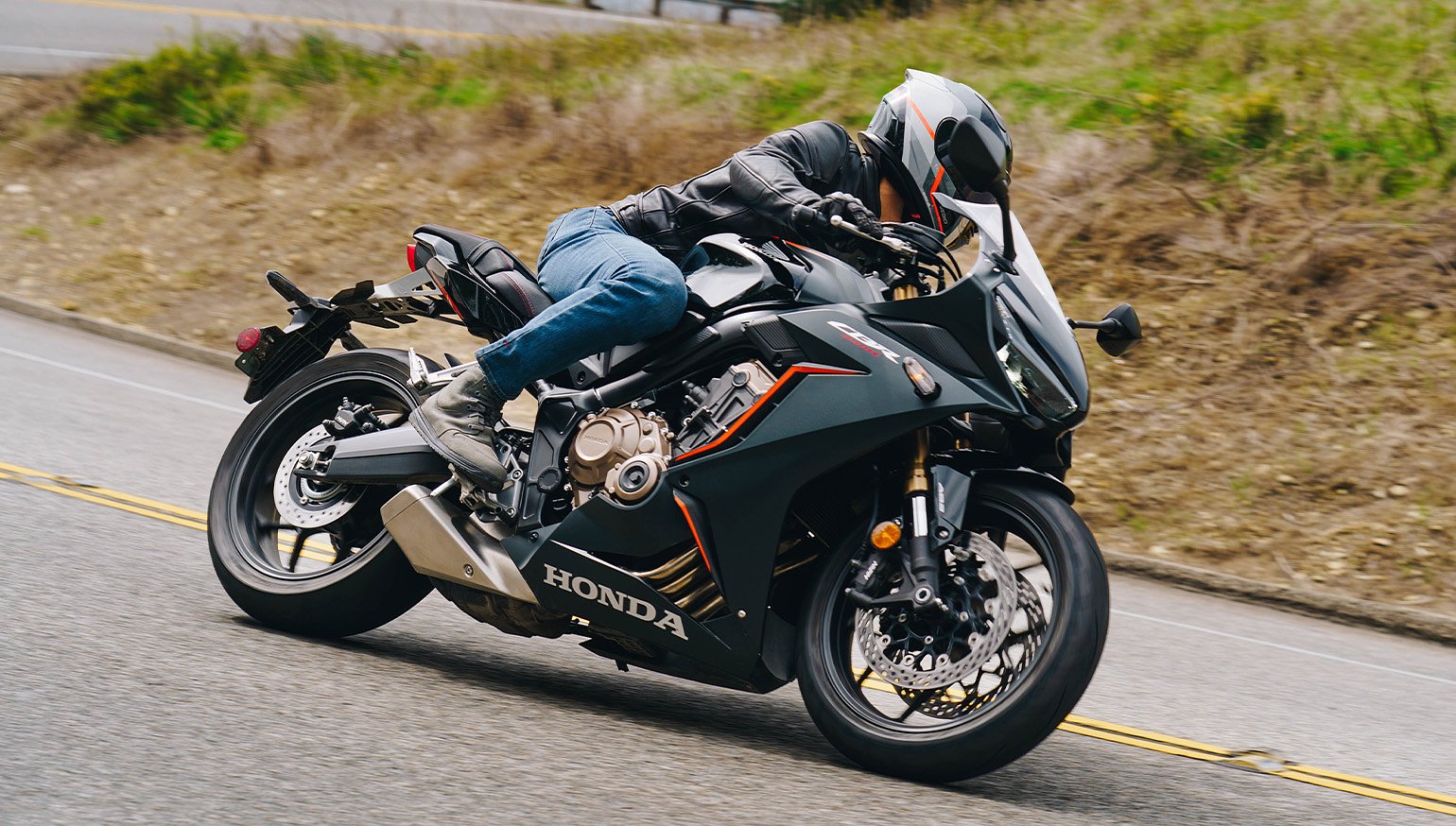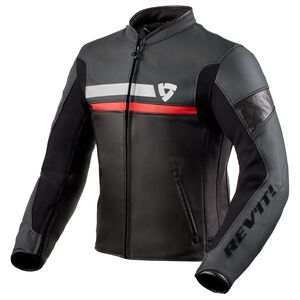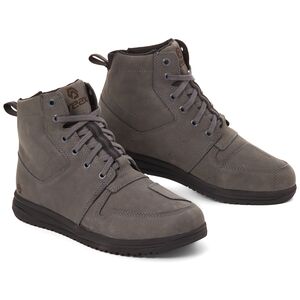Back in my day, we kept it simple. There were only a few of us and we didn't need all the latest doodads or thingamajigs. We were nothing like the new generation, riding around with a bajillion levels of traction control, umpteen ride modes, and those fancy-schmancy TFTs. Nowadays, everyone wants to jump on the bandwagon. What's worse, is that they want to complicate things for the rest of us, too.
If the CBR650R could talk, this is what it would say.
As a holdover from an earlier era, Honda’s street-prepped sport bike is a product of a simpler time. With shiny new toys stealing all the middleweight mojo these days, the CBR650R faces an identity crisis in a rapidly evolving class.
Grandfathered in
Honda’s mid-sized model started life as the CBR650F (F for friendly?) in 2014. Succeeding the CBR600F Hurricane, it was a closer relative to the CB650F naked bike than the fully faired CBR600RR supersport. Like a panda amongst bears, the 650F was the docile, mild-mannered alternative to its CBR brethren.
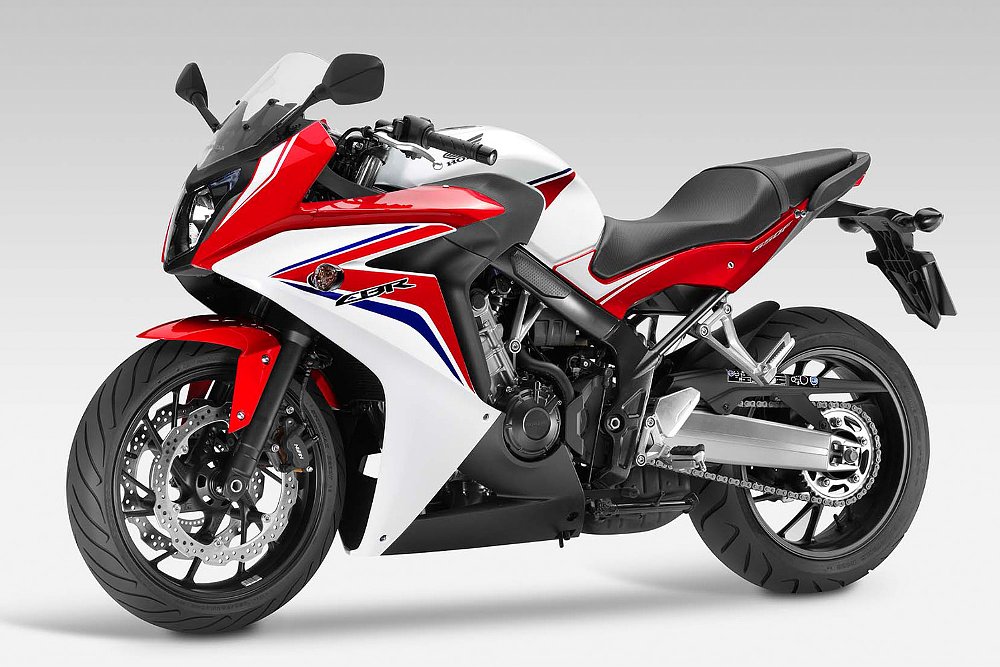
Minor changes marked the CBR's early-stage evolution, but 2019 signaled a substantial shift. That year, it earned a Fireblade-inspired facelift, a lighter, more rigid frame, and a Showa separate-function fork (SFF). The engine revved higher, the radial-mounted calipers bit harder, and traction control offered a modicum of modern technology. That sweeping refresh even merited a name change, with Honda dropping the “F” suffix in favor of the aggro-sounding “R”. And so, the CBR650R was born.
2021 arrived with slight revisions in tow. That included Euro 5-compliant engine modifications and a Showa separate-function big-piston fork (SFF-BP). Updated geometry and rider ergos also improved the 650R’s sporting character without sacrificing too much comfort. And that’s where the CBR remains today. At least, in the United States.
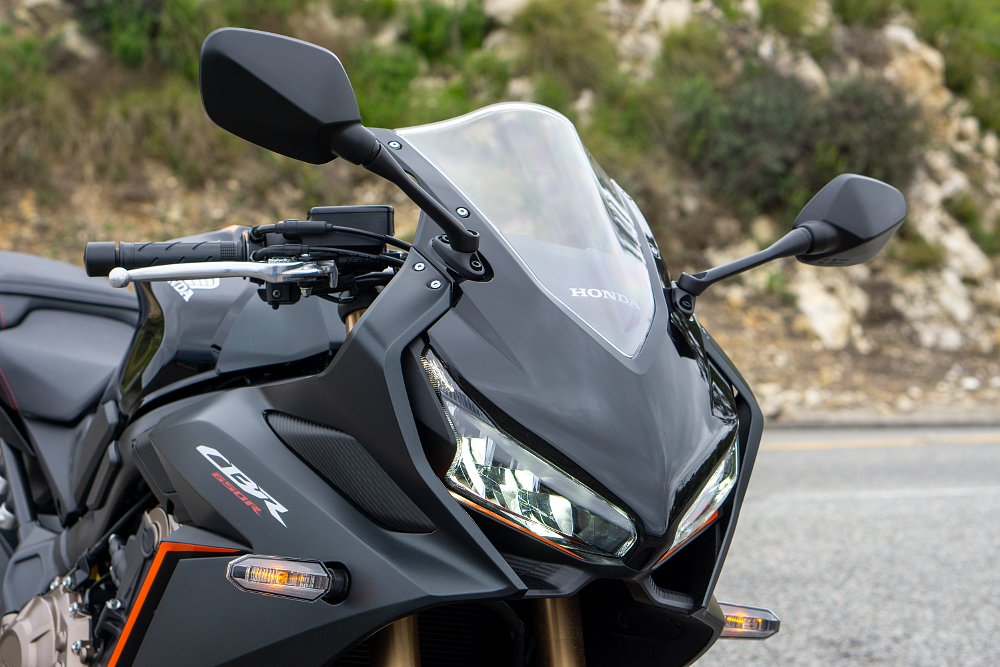
American Honda still hasn’t confirmed the model for 2024 (I’ll expand on that later). As such, the CBR650R evaluated here is a 2022 unit, which is mechanically identical to Big Red's 2023 offering. With the fast-aging CBR at a crossroads, there’s no better time to test its viability in the ever-advancing middleweight category.
The engine room
Honda’s 650 cc sport bike might be a decade on the trot, but compared to its rivals (many of which launched in the last few years), it’s a granddaddy of the segment. Its electronics are basic. Its throttle is cabled. Its styling is so Twenty-Teens. Even its reverse LCD dash seems like a relic by today’s standards. So what keeps the CBR650R kicking in a growing field of twin-powered whippersnappers? Its engine, that’s what.
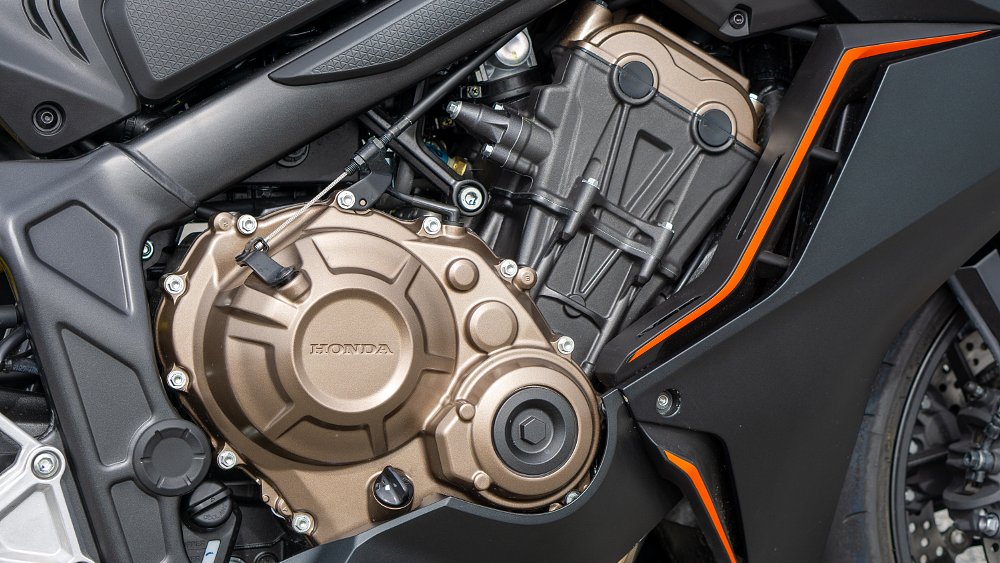
Inline-fours are commonplace on the race track for a good reason: horsepower. Short strokes, high revs, and compression ratios in the teens help achieve those results. There’s just one catch. I4s typically produce most of their horsepower at higher engine speeds, which aren't as easy to access in street riding. The CBR650R’s four-cylinder is different, however.
Tap into first, roll on the gas, slip the clutch, and let there be torque. Not enough to tow a Winnebago, I’m afraid, but just enough to save the CBR from screaming away from stoplights like a pissed-off TIE fighter. Better yet, the available torque remains steady, with only minor modulations between idle and redline.
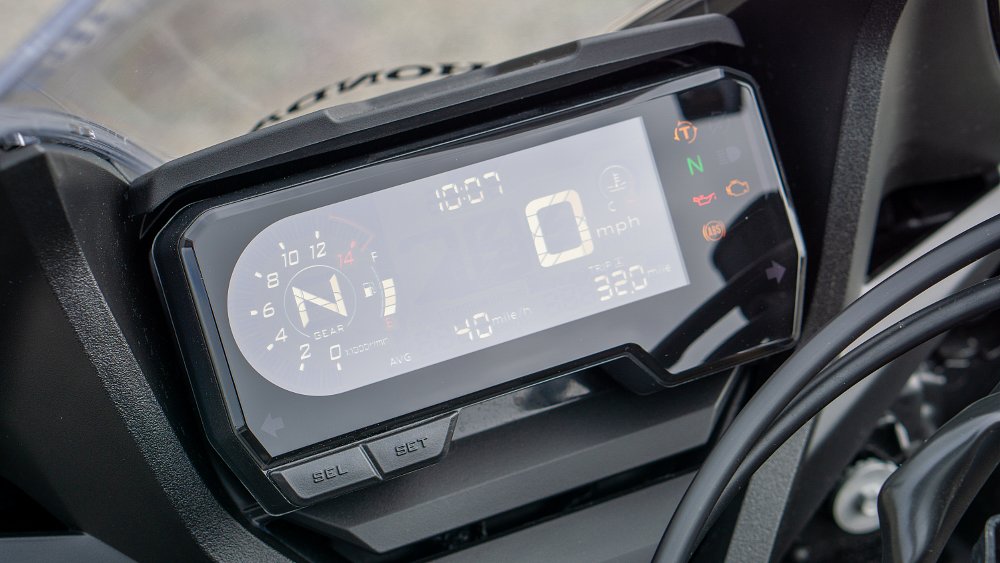
If its torque band is a plateau, its power band is a sand dune, steadily rising throughout much of the rev range. Linear doesn’t quite sum it up. In highly technical sport bike terms, it’s more like “not peaky.” Still, the engine delivers rev-happy thrills, thanks to its 12,500-rpm redline. I can almost hear the CBR whispering, “Let’s see your precious little p-twins do that.”
It reaches those heights in both a predictable and rewarding manner, spooling out like a fishing reel with a marlin on-hook. Well, until 10,000 rpm, at least. At that juncture, the pistons struggle to rev with the same gusto, like catching altitude sickness near the summit of Mount Horsepower.
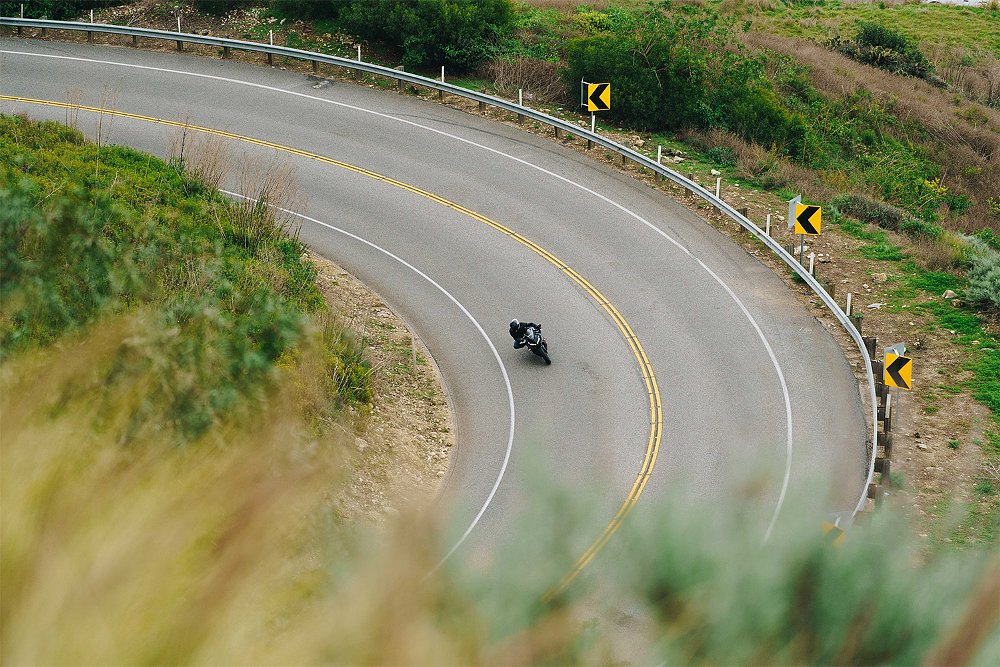
The street-tuned four-banger may not lay down the power like its supersport relatives but that’s what makes it one of the most flexible mills on the market. There’s no other way to describe an engine that can top 60 mph in first gear and hold 25 mph in sixth (under 1,950 rpm, no less). That agreeability also lends itself to highway riding.
Prefer the smooth-cruising cadence of 6,000 rpm in top gear? Say less. Rather roar down the Interstate at 10 grand in third? Hey, it’s your eardrums. It’s the engine’s elastic character that puts the power (to choose) in the rider's hands and has the CBR thumbing its nose at its two-cylinder foes.
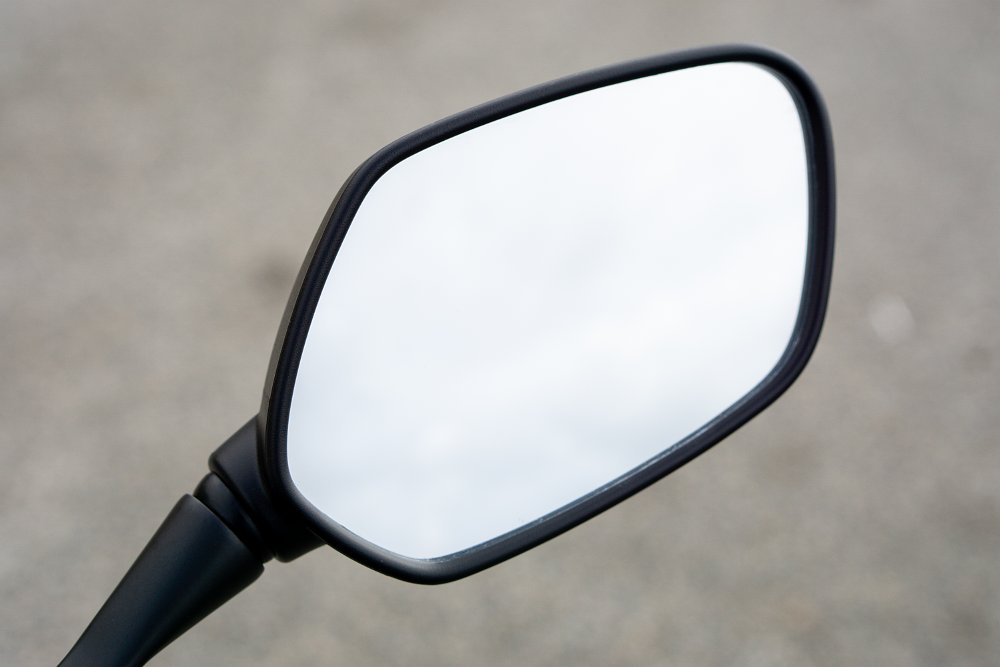
What’s more, the CBR’s four-pot powerplant produces fewer vibrations than many of its parallel-twin counterparts. Under 6,000 rpm it’s smooth sailing. By 6,250 rpm, buzzing builds along the seat before subsiding around 7,000 rpm. It doesn’t return until 8,000 rpm and 10,000 rpm, when vibrations ripple through the pegs and tank (in that order). While perceptible, those tremors hardly grew in intensity and never grew tiresome over the long haul. Yet another benefit of the inline-four layout.
In a sea of twins, the CBR650R presents a four-cylinder option that doesn’t sacrifice everyday practicality at the altar of white-knuckle performance. Sure, you have to rev it out to reach its peak power. Yes, that yields diminishing returns beyond 10,000 rpm. But for those attuned to the music of a four-pipe symphony, the 650R provides familiar sounds and sensations in a street-able package. “Eat your heart out, bandwagoners.” Sincerely, the CBR650R.
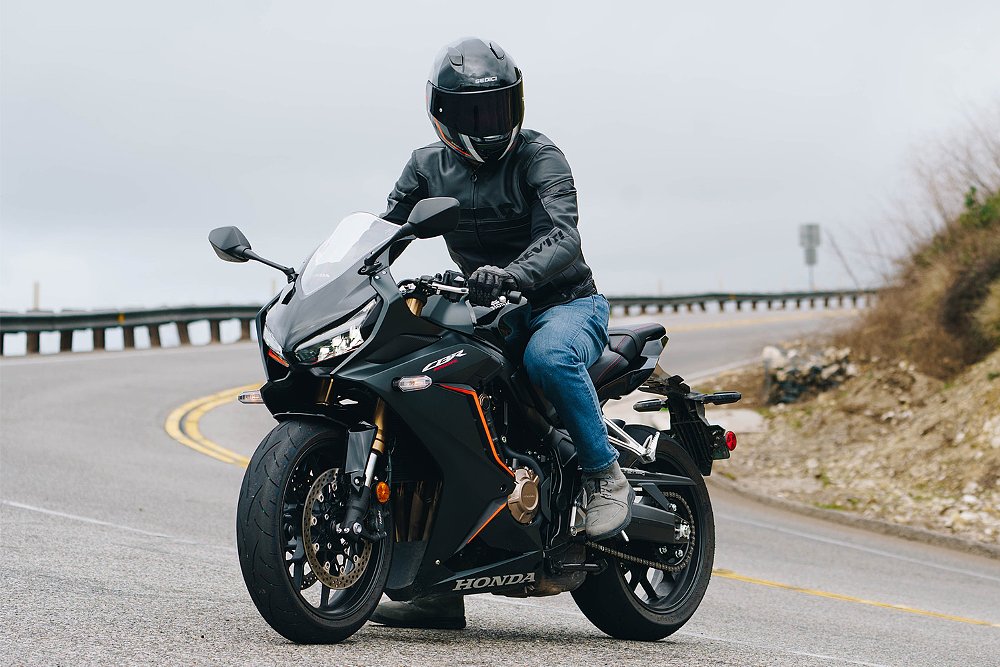
Healthy boundaries
No engine gets very far without a chassis. So, what are we working with here? It’s pretty simple. The twin-spar frame is constructed from steel. The 41 mm fork and monoshock hail from Showa. Nissin provides the stopping power and the Y-spoke wheels roll on Dunlop Sportmax D214 tires. Capeesh? Those armaments are more than enough firepower for canyon riding, but on a high-momentum circuit like California’s Chuckwalla Valley Raceway, it’s easy to spot where the CBR650R excels and falls short. So, that's where I took it.
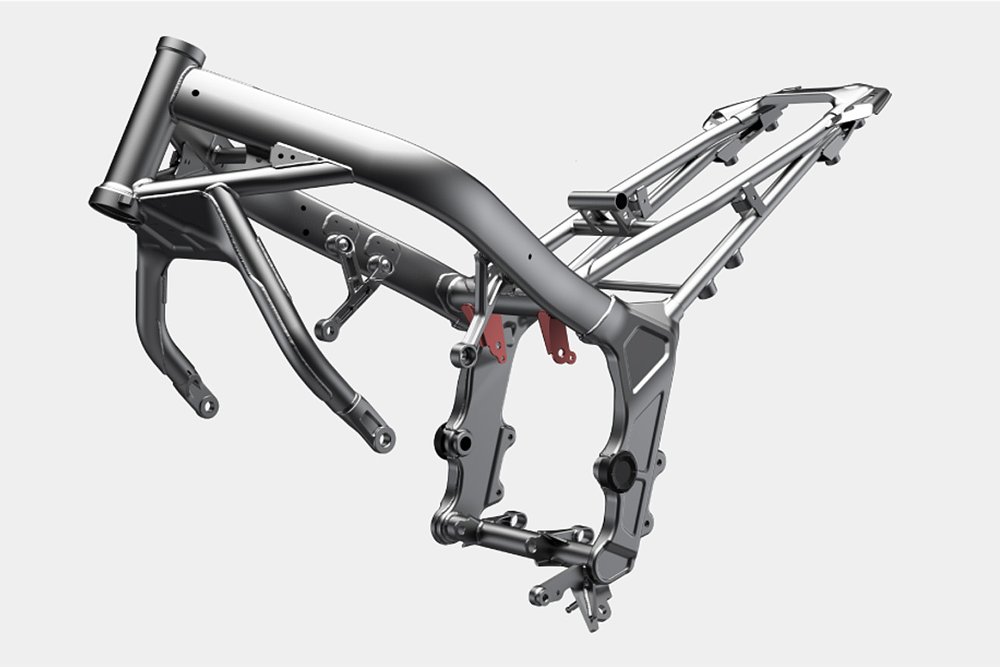
I’ll start with the good news first. Showa’s separate-function big-piston fork (SFF-BP) is a true standout. The budget-minded front end doesn’t offer adjustability but it does offer supple damping to help level road inconsistencies. More importantly, it remains stout under hard braking. Even as I moved my markers deeper into the corner, not once did the 650R pitch on its nose.
While we’re on the topic of brakes, they’re pretty good. About as good as one would expect an axial front master cylinder feeding radially mounted calipers through rubber hoses. Maybe more so (depending on those expectations). Chuckwalla isn’t a heavy-braking circuit. It features several short straights leading into chicanes or long sweepers. You still need a trusty set of binders, though, if you’re rushing headlong into the affectionately named “Crash Corner” and the blind-entry “Slide.”
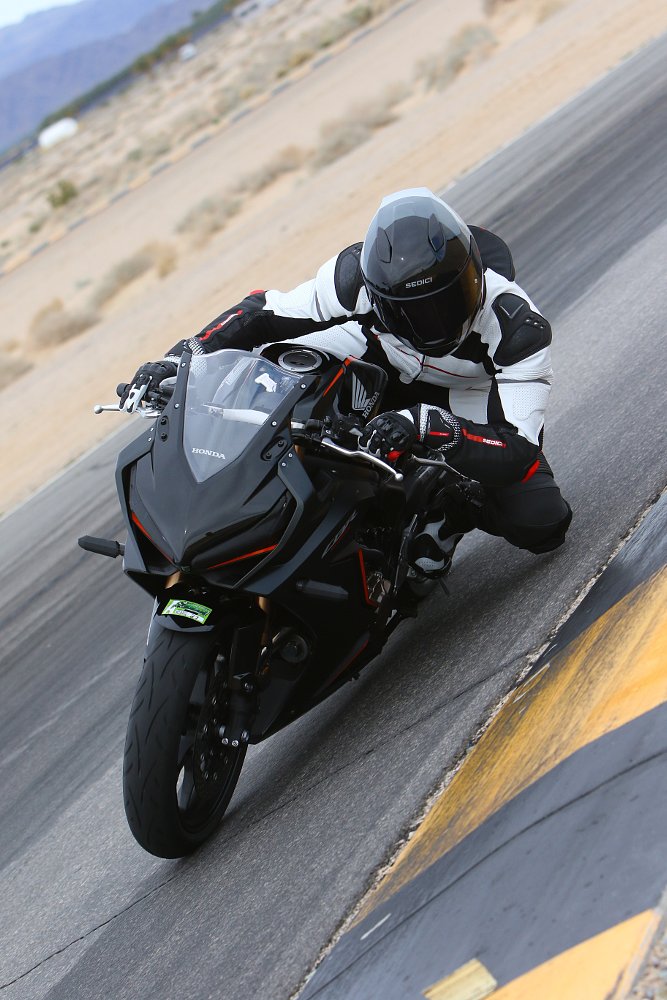
In every instance, the setup did the deed. Initial bite isn’t especially strong, and neither is feel at the lever, but not once did I doubt the setup's stopping abilities. I’m happy to report that brake fade never reared its ugly head, either. Those results may vary on circuits with consecutive heavy-braking zones, but at Chuckwalla — and on the road — the Nissin system proved more than capable. All considered, gold stars for the brakes and fork. I wish I could say the same for the shock.
The Showa unit meets most of the CBR’s duties. It’s only under heavy forces that the unit doesn’t quite hold up. For instance, hard acceleration causes the shock to quickly sink into the midstroke. It doesn’t handle high-speed hits so well, either. During street rides, large bumps regularly popped me out of the saddle. I’m sure a fully adjustable shock is out of the budget for Honda, but customers can look for aftermarket solutions if deemed necessary.
If grip and feedback are your top priority, purchasing a different set of tires is also a worthy investment. The stock Dunlops satisfy the model’s road purposes but they’re far from ideal for the track. At full lean, the front end was slightly twitchy around the long, left-hand turn four/five. I could practically hear the 650R warning me, “Back off, bub, you’re pushing my limits.”
Rear grip suffered by the end of the day, too, especially out of the downhill turn 10. It started with the kind of wiggles and waggles that recede to the back of your mind as you peel down the back straight. That is, until the rear steps out in earnest. When that inevitably occurred, traction control saved me from a lowside and particularly awkward conversation with American Honda’s PR team.
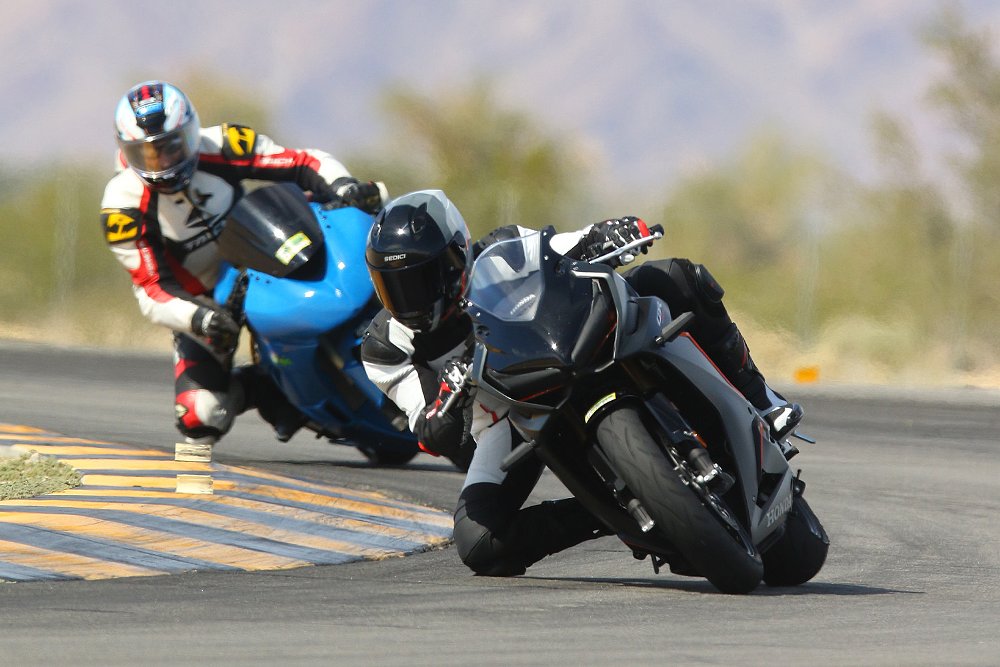
If nothing else, the CBR650R’s handling is consistent and predictable. Precision isn't its priority, however. After all, its 456-pound curb weight (claimed), budget hardware, and road-biased rubber force it to balance a sensible day job with its sporty side hustle. Something has to give. Yet, that versatility still makes the model a relevant contender in the category — should it decide to stick around, of course.
Where to now?
The CBR650R’s future in the States may be in limbo, but Big Red is confident in its continued prospects elsewhere. Honda Europe already announced the 2024 CBR650R equipped with the brand’s new E-Clutch technology, which allows users to change gears and roll to a stop without actuating the clutch. In theory, the new system positions the CBR as the go-to beginner option within the class. Whether American Honda follows suit or abandons the model is the real question.
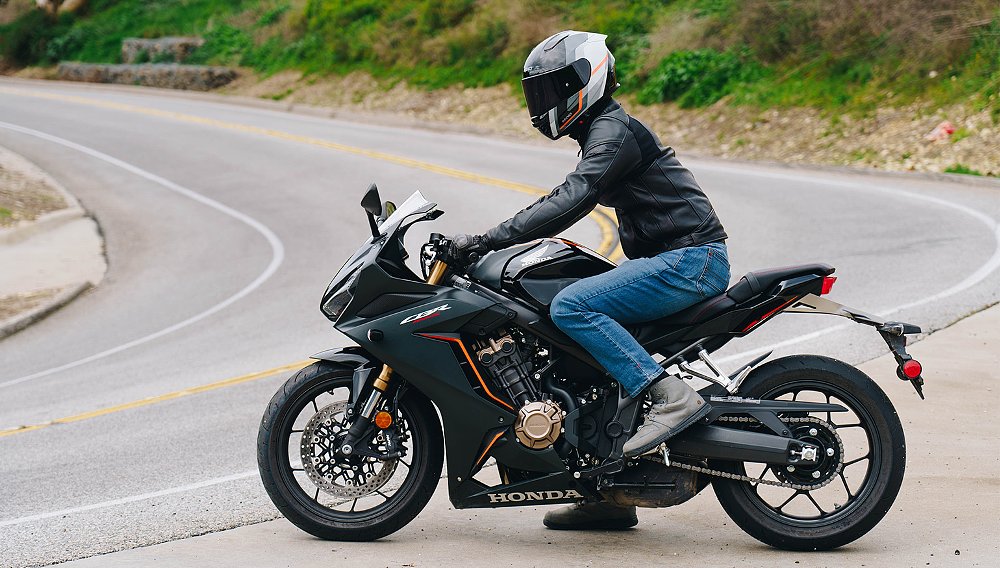
One thing is still clear. After 10 years under its belt, the four-cylinder sport bike offers something its contemporaries can’t. That value prop may not draw as many customers as it once did, though. Would releasing the CBR650R with an E-Clutch renew interest with U.S. buyers? I can't pretend to know the answer to that question. What I do know is that the CBR is still a viable option, even if it's somewhat dated at this point. Whether its best days are behind it or before it is entirely up to Honda.
| 2022 Honda CBR650R | |
|---|---|
| Price (MSRP) | $9,799 (2023: $9,899) |
| Engine | 649 cc, liquid-cooled, 16-valve, inline-four |
|
Transmission, final drive |
Six-speed, chain |
| Claimed horsepower | N/A |
| Claimed torque | N/A |
| Frame | Twin-spar steel |
| Front suspension | Showa 41 mm fork; 4.3 inches of travel |
| Rear suspension | Showa monoshock, adjustable for spring preload; 5.0 inches of travel |
| Front brake | Dual Nissin four-piston calipers, 320 mm discs with ABS |
| Rear brake | Nissin one-piston caliper, 240 mm disc with ABS |
| Rake, trail | 25.3 degrees, 4.0 inches |
| Wheelbase | 57.0 inches |
| Seat height | 31.9 inches |
| Fuel capacity | 4.1 gallons |
| Tires | Dunlop Sportmax D214, 120/70-17 front, 180/55-17 rear |
| Claimed weight | 456 pounds (wet) |
| Available | Now |
| Warranty | 12 months |
| More info | powersports.honda.com |




